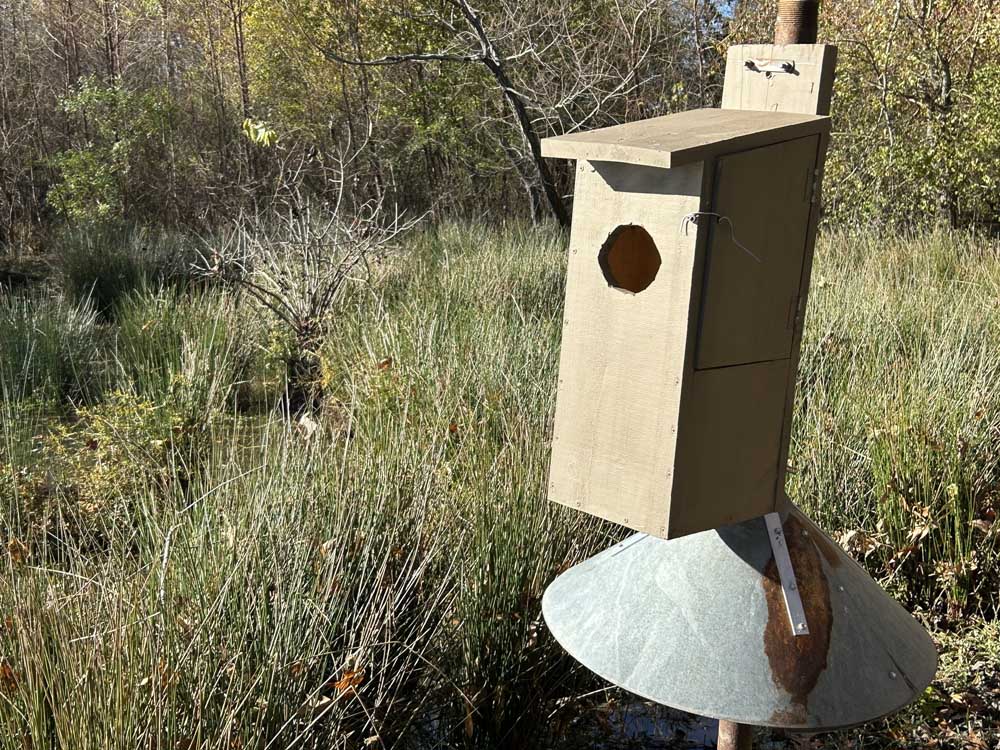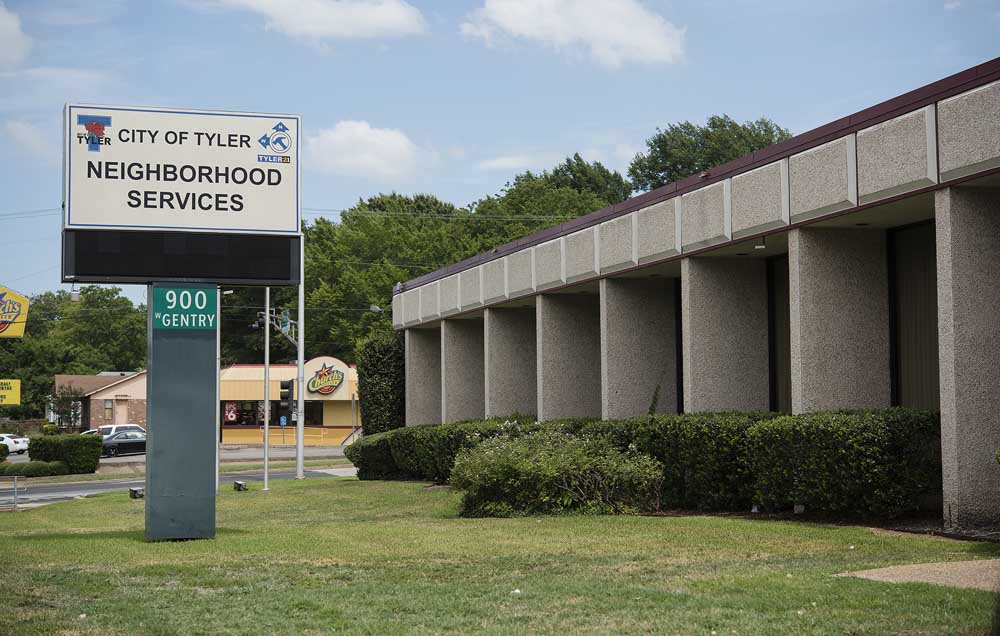Boxed In: Properly placed and maintained duck nesting boxes help build populations
Published 11:26 pm Friday, January 10, 2025

- Nesting boxes were an important factor in rebuilding wood duck numbers during the 20th century. (Steve Knight/Tyler Morning Telegraph)
I got the great idea last fall to build a wood duck box for a friend’s ranch. Well, you know how that went, one became four and then eight on three different lakes.
I was replacing some boxes that had been built in a joint project between the Texas Parks and Wildlife Department and the Texas Department of Criminal Justice decades ago.
I remember visiting the prison at Tennessee Colony where prisoners were making the boxes. Walking the hallways with a captain and superintendent of the prison system’s school district, my first thought was to remember why I needed to walk a straight line in life.
Secondly, I was impressed with the effort put into making the nesting boxes that odds were none of those working on them would ever see them in the wild.
As a testament to how well the prisoners built the old rough-cut oak boxes, most were still standing although they really had not been cared for over the years and were not in usable condition.They were, however, a template for the new ones.
Expecting there had been some changes in design ideas over the years I also did the prudent thing and googled for answers and found lots of free ideas and plans. From there it was a matter of converting them to the materials I could find, and that meant starting with a trip to visit Lacey Wilcox at Wilcox Timber and Lumber in Rusk. Although Wilcox is best known for its cedar boards that make excellent bluebird boxes, they also have 1×10 farm-raised cypress that was perfect for the project.
The old poles and the predator guards also still existed, which in the current market are expensive components. The predator guards are key to nesting success to keep raccoons and snakes from stealing the eggs. They are still vulnerable to damage by ants and woodpeckers, of all things.
I knew in some cases it was going to require digging up the poles and moving them, and in a few others the galvanized sheet metal guards had to be reshaped and supported.
Wood ducks prefer to nest in tree cavities alongside lakes or rivers and in the shallow backwaters.
But they will nest almost anywhere they find the right set-up. The oddest location I ever saw a nest was behind the first-base dugout at the old tee ball field at Tyler’s Fun Forest Park. Every night in the spring, just as the sun would set, woodies would glide in over the little leaguers and into the cavity of the old oak tree. The season would be over too early to tell if they pair had pulled off a brood, but it was a sight to watch the birds ignore so much human activity to nest.
Although not as necessary as they once were, nesting boxes can help in local situations. Duck boxes have been around in some form since the 1930s, but it was not until the 1960s and 70s they became a conservation cause primarily by hunters.
More commonly found in southeastern states, and especially the drainages of the Mississippi River, wood ducks were hunted almost to the point of extinction in the early 1900s. Then came timber clearing as the country expanded, taking away nesting habitat.
Those factors combined in having the season closed for 22 years starting in 1918 in the U.S. With the rebound in population the birds can now be found as far west as California and there is a three-bird limit on the ducks. The species makes up about 10 percent of the total annual duck harvest nationwide.
Unlike the traditional south to north breeding migration for most waterfowl species, up to 75 percent of wood ducks will either remain local or migrate longitudinally. Individuals will often return to the same or a nearby nesting site annually, as do their offspring.
While the boxes are built for wood ducks, they might also be used by hood mergansers or black-bellied whistling tree ducks.
Recent views, however, indicate that on the overall wood duck population, nesting boxes no longer have the impact they once had. Part of that is because natural nesting sites have improved in prime habitat enough to sustain the wood duck population, and better than would occur with boxes.
But there is also a human factor that leads to lest than optimum success with boxes.
“Most of the time boxes are not placed in the correct locations. They are not placed in an area that is conducive to good brood survival and brood habitat. This causes a female and the brood to travel great distances to suitable habitat leading to increased predation and decreased survival of ducklings. We see this a lot when people place boxes on the edge of reservoirs etc. In this way it is an easy place for the female to nest but acts as a sink to the population by virtually no duckling survival,” explained Clay Shipes, TPWD waterfowl biologist in East Texas.
He added another issue is that often after a few years upkeep on the boxes wanes, with predator guards failing, eggs being left and other issues that makes the boxes unsuccessful nesting sites.
“One thing people don’t realize is that just because a hen nests in a box and hatches a brood doesn’t mean that she wouldn’t nest and hatch in a natural cavity. People view birds that come out of a box as additional birds in the population, but that is not the case and a common misconception,” Shipes explained.
This means hunters and landowners have to look at their local situation to determine if adding boxes would be a benefit or not.
There are recommendations on minimum size, height above the water or ground and how to prepare them for nesting. While there are numerous plans online, along with some options for buying constructed boxes, Ducks Unlimited offers suggestions at https://www.ducks.org/conservation/waterfowl-research-science/build-a-wood-duck-box?fbclid=IwAR1I3S4N93EsGjdwzEHv7WB43td4qhcHeLBbNvVj_vkO1xK4rjoZmu2Ayyc.






